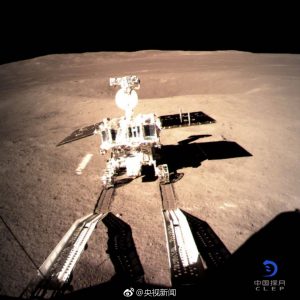
President Trump signed the National Defense Authorization Act (NDAA) on December 20, creating the U.S. Space Force in doing so. As the sixth branch of the U.S. military, it is nested within the Department of the Air Force, much like the Marine Corps is connected to the Department of the Navy. By creating a new, separate service with a dedicated purpose, the intent of the new branch is to maintain space superiority even as space becomes more crowded and contested. The NDAA also directs the Space Force “shall provide the freedom of operation in, from and to space, while providing prompt and sustained space operations.”
Secretary of the Air Force Barbara M. Barrett praised the formal creation of the U.S. Space Force, identifying it as a critical capability in defending the nation and pledging that the first new branch of the military since 1947 would be established with speed and clarity of purpose. “The launch of an independent U.S. Space Force propels us into a new era dedicated to protecting U.S. national interests and security in space,” Barrett said. “We will work with (Department of Defense) leaders, Congress, our joint military teammates, industry and our national security partners as we establish the Space Force to ensure continued American leadership in space.”
By breaking out space resources from the Air Force, the new branch is expected to minimize bureaucratic overhead and maximize focus on operations, intelligence and fielding of advanced capabilities, saving money in the process through efficiencies. The Space Force will leverage the Air Force for more than 75% of its enabling functions to reduce cost and avoid duplication; this includes capabilities ranging from logistics, base operating support, civilian personnel management, business systems, IT support and audit agencies.
“Space is the world’s newest war-fighting domain,” President Trump said during the NDAA signing ceremony. “Amid grave threats to our national security, American superiority in space is absolutely vital. And we’re leading, but we’re not leading by enough. But very shortly we’ll be leading by a lot.”

The Trump administration has been shifting space-related groups, budgets, and goals around in recent years to drive America’s superiority in space. In 2017, President Trump reinstated the National Space Council, appointing Vice President Pence as its Chair. In December 2017, President Trump issued a directive to get NASA to focus on crewed missions to space. “The directive I’m signing today will refocus America’s space program on human exploration and discovery,” said President Trump at the time that directive was issued. “It marks an important step for returning American astronauts to the moon for the first time since 1972, for long-term exploration and use this time… We will establish a foundation for an eventual mission to Mars.”
In late 2018, President Trump formally ordered the Pentagon to strip the Strategic Command of its “space-related responsibilities” and give them to a separate entity: Space Command. Unlike Space Force, Space Command is tasked with defending American satellites, supporting American troops from orbit and planning how future combat might be conducted in space. In May, Trump boosted NASA spending by $1.6 billion to get women and men onto the moon. Known as Artemis, the program projected to bring people to the Moon by 2024 is a follow-up to the Apollo project of the 1960s that brought manned missions to the Moon then.
While President Trump is retooling America’s space program, other countries are launching their own endeavors. Last December, China launched their own unmanned Moon mission to the “dark side” of the Moon. That mission continues today, with the expectations that China will be establishing a manned moonbase soon. Earlier this year, a small Israeli nonprofit, SpaceIL, tried to send a small robotic lander to the Moon, but that mission ended with a crash onto the Moon. Chandrayaan-2 is an Indian mission to send an orbiter, lander, and rover to the Moon. The 3 vehicles launched as 1 combined spacecraft to lunar orbit, and the lander, carrying the rover, attempted but failed to touch down in the Moon’s southern hemisphere. The orbiter continues to study the Moon from above.
The moon, NASA says, is an important gateway to space travel. Creating a permanent base both on the moon will provide astronauts a platform from which they can explore the deeper realms of space, including manned missions to Mars.
President Trump’s investment and attention in space is different from the previous administration. President Barack Obama had cancelled much of NASA’s space exploration programs during his administration, including a previously planned manned mission to the moon using SLS spacecraft. Because it will take time to rebuild NASA’s space exploration program after the Obama cuts, it’s possible Trump may not see crewed missions to the Moon or beyond during his administration, even if he wins re-election in 2020. While it may take time for the U.S. government to get there, private industry may beat it. Companies like SpaceX have their own ambitious space programs beyond that the government is doing.